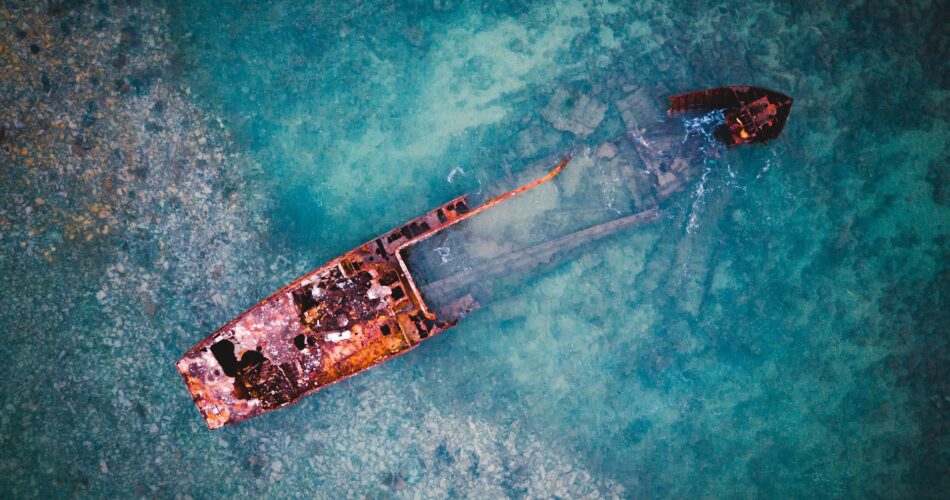A trip to Sao Tome and Principe is one that will give you a genuine and off-the-beaten-path experience. It is often referred to as “Africa’s Galapagos” due to the incredibly high number of plant and animal species. The two islands are covered in dense, emerald-green rainforests and are encircled by beaches.
Most people are completely unaware that São Tomé and Príncipe is the name of a country. For the benefit of those individuals, the following is a brief overview of things to know about São Tomé and Príncipe before your visit.
A trip to São Tomé and Príncipe will give you a genuine and off-the-beaten-path experience that will let you truly explore the jungle and immerse yourself in the island way of life. These mysterious African islands can be found in the Gulf of Guinea, just off the coast of West Africa. They entice with the assurance that paradise awaits those who answer their call.
The two islands of Sao Tome (the larger of the two) and Principe (the smaller of the two) are located in the middle of Africa, directly on the Equator. In addition, numerous rocky islets such as Rolas, Caroco, Pedras, and Tinhosas can be found in the central region of Africa.
The islands are covered in dense, emerald-green rainforests and are encircled by beaches of golden sand and crystal-clear waters, giving off the impression that they are located in a long-lost world. You’ll find a natural rhythm of life that’s easygoing and laid back here, as well as a strong presence of Portuguese culture.
It is often referred to as “Africa’s Galapagos” due to the incredibly high number of plant and animal species found nowhere else on the planet. Principe is a protected UNESCO biosphere reserve virtually undiscovered and untouched by human activity.
Discover the Rich History and Delicious Food of São Tomé And Príncipe
The welcoming locals immediately make you feel at home in their idyllic setting. A lovely synthesis of Portuguese and West African styles can be seen. Like the exotic birds of São Tomé and Príncipe, the country’s culture is full of life and color. It is a center for folk music, dance and displaying original works by skilled artisans.
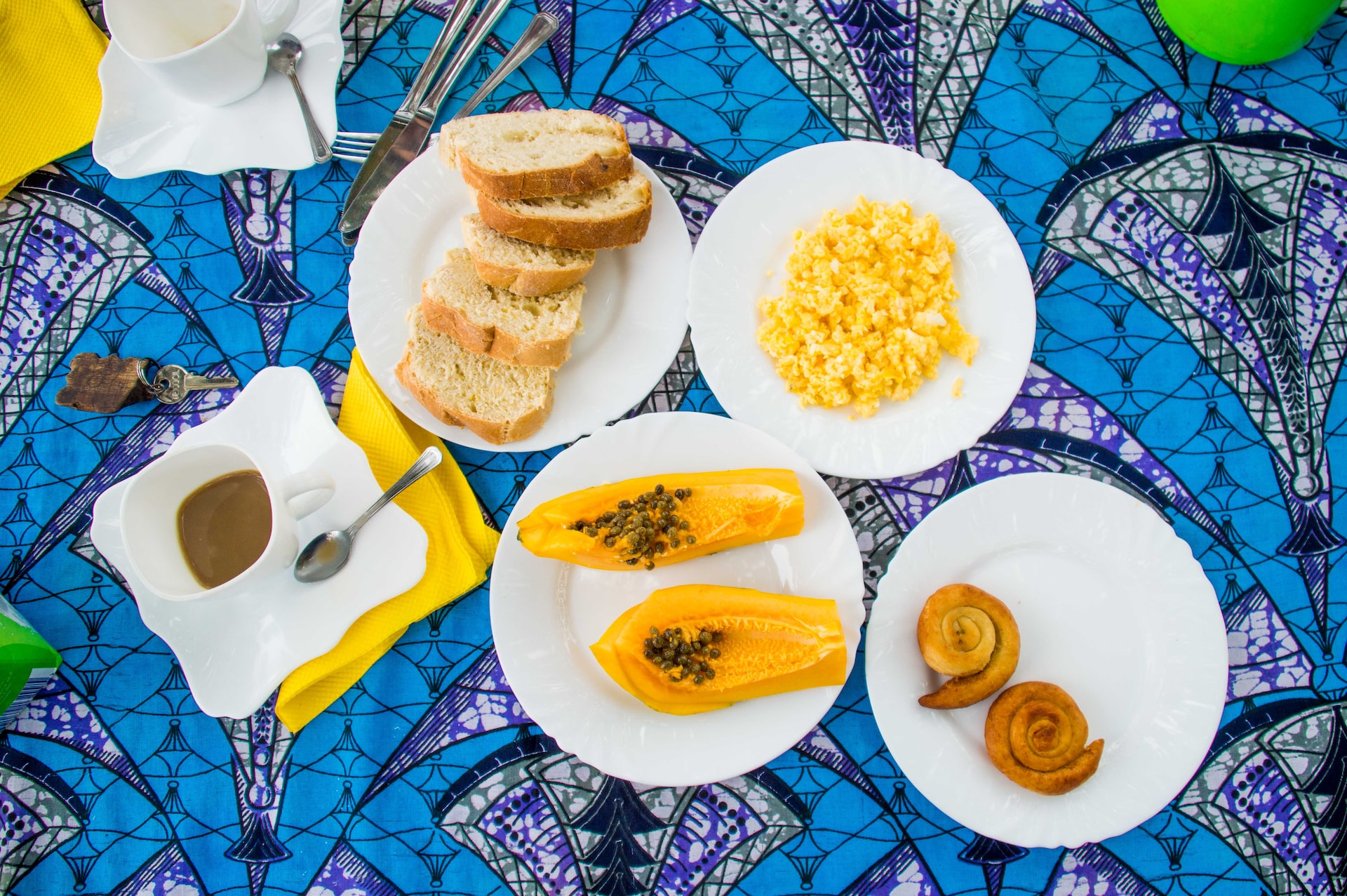
Praia Inhame Eco Lodge Sao Tome and Principe
There are numerous coffee and cocoa plantations, and many of the original plantation homes have been renovated into hotels, guesthouses, and other tourist attractions. In other words, you should be prepared to fall in love with the “chocolate islands” because of the delicious coffee and chocolate you can find there. Creative dishes are prepared with a focus on using seasonal, locally sourced ingredients like fresh fish, herbs, and sweet tropical fruits. It’s common practice to serve seven-course tasting menus for lunch, allowing diners to leisurely while away the hours.
Quick Overview Of History Of São Tomé And Príncipe
In the late 15th century, Portugal found and colonized the uninhabited islands, establishing a sugar-based economy that later gave way to coffee and cocoa in the 19th century, all grown with African plantation slave labor, a form of which persisted into the 20th century. Despite gaining its independence in 1975, democratic reforms were not implemented until the late 1980s. Despite holding its first democratic elections in 1991, the country has since experienced multiple leadership changes and four unsuccessful, nonviolent coup attempts in 1995, 1998, 2003, and 2009.
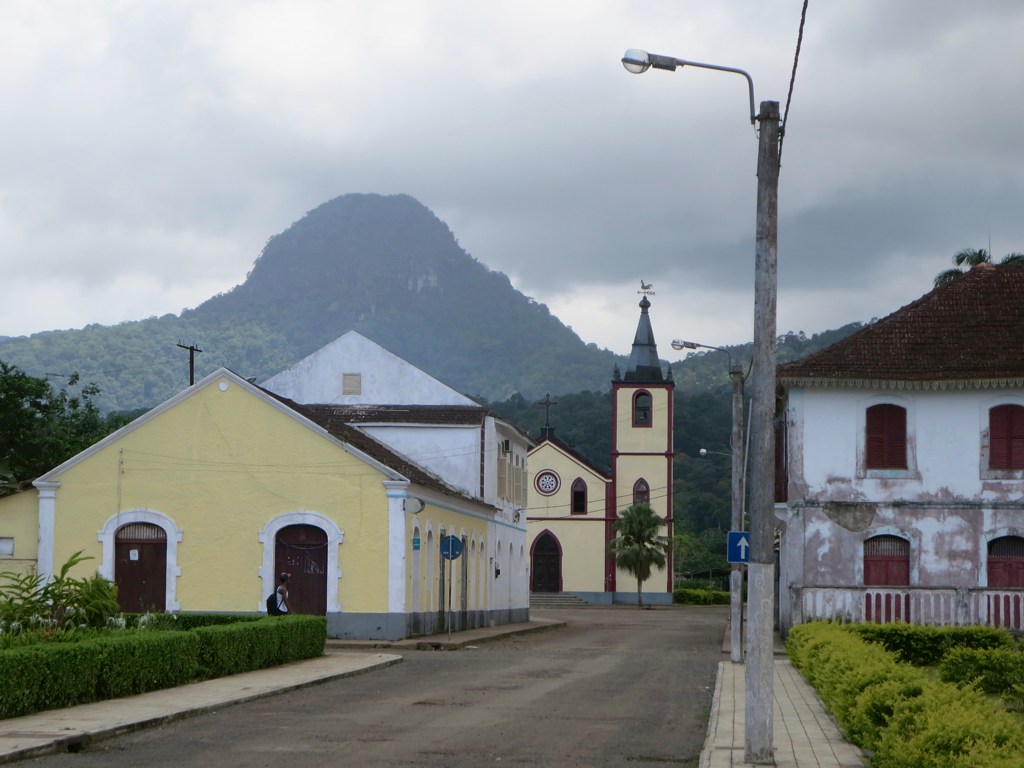
town of Santo Antonio; Credit : https://www.flickr.com/photos/davidstanleytravel
Former Prime Minister Patrice TROVOADA’s majority government was toppled in 2012 by a no-confidence vote from three opposition parties, but he was re-elected in 2014 following parliamentary elections. In September 2016, President Evaristo CARVALHO, a member of the same political party as Prime Minister TROVOADA, was elected, making this a rare occurrence.
At the year’s end, Prime Minister TROVOADA announced his resignation, and Jorge BOM JESUS was sworn in as his successor. Early in September 2021, Carlos Vila NOVA was elected president, and on October 2 of that year, he was sworn in as head of state. The tiny island nation may become more well-known due to recent oil discoveries in the Gulf of Guinea.
São Tomé and Príncipe Currency
If you ever plan to travel to the island, one of the most important things to know about São Tomé and Príncipe is currency. The Dobra is the official currency of São Tomé and Príncipe. The letter represented is Db. Never confuse dB with dB. In decibels, the letter “D” represents a low volume.
Similarly, there is no central bank-sanctioned currency swap. Everything takes place on the sidewalks, with money changers stationed in front of the city’s most renowned eateries and gas stations. A credit card cannot be used for purchases on the islands.
There are no automated teller machines (ATMs) that accept foreign currency. All other bank cards are not accepted at these ATMs. Your entire trip requires you to carry cash. Only bank cards issued by that particular ATM provider will be accepted. You must travel with a sufficient amount of cash.
Banks and hotels are common places to exchange currency, but informal brokers can sometimes be found online for a lower rate. Don’t be alarmed if street money changers approach you in So Tomé city; this is the standard way of doing business. Count your money, use a calculator, and agree on a rate. In Principe, a trip to the bank is a necessity.
Even though the euro is widely accepted, it is common to be given change in dobras rather than euros. When you purchase euros, you’ll pay more overall because of the added cost of the currency conversion. If you plan on staying in So Tomé city for a week, the best way to get around is to bring 50 Euros and exchange them for enough dobras to last you the entire trip at a local street broker.
Spoken language in São Tomé and Príncipe
São Tomé and Príncipe use Portuguese as their official language in Portuguese-speaking country. Nearly everyone there is also fluent in French. Not every situation calls for fluency in English. The majority of the staff at the hotel does not feel confident communicating in English. You should make an effort to learn both French and Portuguese. In terms of language proficiency, Forro ranks third. Simply put, it’s a creole language with Portuguese as its foundation. Although English is spoken in the capital, Portuguese will always be the official language of Sao Tome and Principe.
Zobraziť tento príspevok na Instagrame
São Tomé and Príncipe – Best Time to Visit
The latitude and the ocean’s proximity mean that it is always warm and humid. February–May, and October–December are the wettest months. Most of the dry season, from June to September, is cloudier and milder than the months preceding and following. Orchids are easier to see during the rainy season, but if you want to hike comfortably, the best time to visit is January, when they are still in bloom at elevations over 800 meters. From August to October, you can watch humpback whales as they migrate along the coast.
Birds on the island put on their mating plumage between the middle of January and the middle of February. From November through March, visitors can witness marine turtles nesting; from September through April, they can watch hatchlings return to the ocean. December and March is the clearest time to go scuba diving.
São Tomé and Príncipe ‘s Public Health and Safety
Make sure that your immunizations against tetanus, polio, diphtheria, and hepatitis A are all up to date. You should take anti-malarial medication because the disease is still prevalent even though the number of malaria cases is decreasing on both islands. Bring insect repellent with you to reduce the likelihood of getting bitten, and if you’re going to be staying in low-cost lodging, you might want to consider investing in an insect net. Drink only distilled water that has been boiled.
In most cases, São Tomé and Príncipe are safe countries to visit. On the other hand, some people engage in pickpocketing on the islands. Most thefts take place at nightclubs and beaches, as these are public places frequented by many people. You might want to put your valuables in a waterproof pouch to bring them with you when you go swimming.
5 Facts And Things To Know About São Tomé And Príncipe Before Your Visit
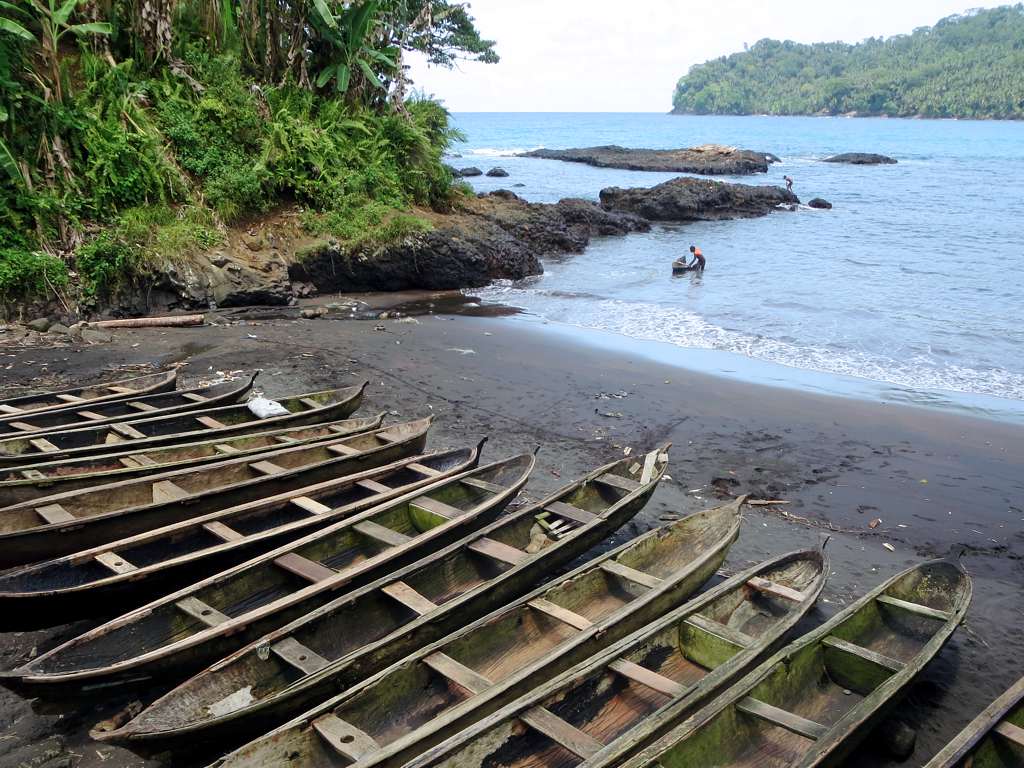
Dugout canoes are hauled out at Praia Sao Joao de Angolares on the southeast side of Sao Tome Island; Credit : https://www.flickr.com/photos/davidstanleytravel
It was one of the earliest democracies in Africa.
São Tomé and Príncipe is notable for being early adopter of a democratic government in Africa. After amending their Constitution in 1990, they became the continent’s first multi-party democracy. Compared to the vast majority of African countries, São Tomé and Príncipe’s first democratic elections stood out for being peaceful, open, and transparent. This level of political stability has lasted up until now. It has opened the door to foreign investment, which has helped the country’s economy.
A majority of their harvest consists of cocoa.
The sugar industry in São Tomé and Príncipe dates back to the 17th century. Slaves, many of whom identified as Jewish, labored on these plantations. Since sugar production was halted in the 19th century due to the introduction of coffee and cocoa, these two beverages are considered “modern” inventions. The island of Sao Tome relies heavily on the cocoa industry, which accounts for 95% of the island’s exports.
They first started growing it in 1908 and have continued ever since. Copra, coffee, and palm kernels are also exported from the country. Their primary markets are the United Kingdom, the Netherlands, and Belgium. The economy, however, has been evolving. The point is to have a diet that isn’t made entirely of cocoa. Seeing how petroleum can be found relatively close to the coast, the government has decided to put money into expanding the oil industry.
The highest elevation in São Tomé and Príncipe is 2,000 meters.
The summit of So Tomé Peak, at 2,024 meters, is Sao Tome’s highest point. A peak called Principe Peak on the island of Principe is 948 meters high. Rivers that begin high in these mountains eventually empty into the ocean. The Obô National Park is home to a substantial chunk of the Atlantic rainforest that covers 30% of the country. Many rivers and waterfalls can be found there as well.
Pico Có Grande is an impressive mountain peak in The Obô. It’s the needlelike summit of a volcanic plug. At its highest point, it towers 370 meters above the surrounding landscape and 668 meters above sea level. This plug is the result of magma cooling and solidifying in the opening of an active volcano. But the mountain range to which it originally belonged has disappeared.
In terms of land area, it is the second-smallest country in Africa.
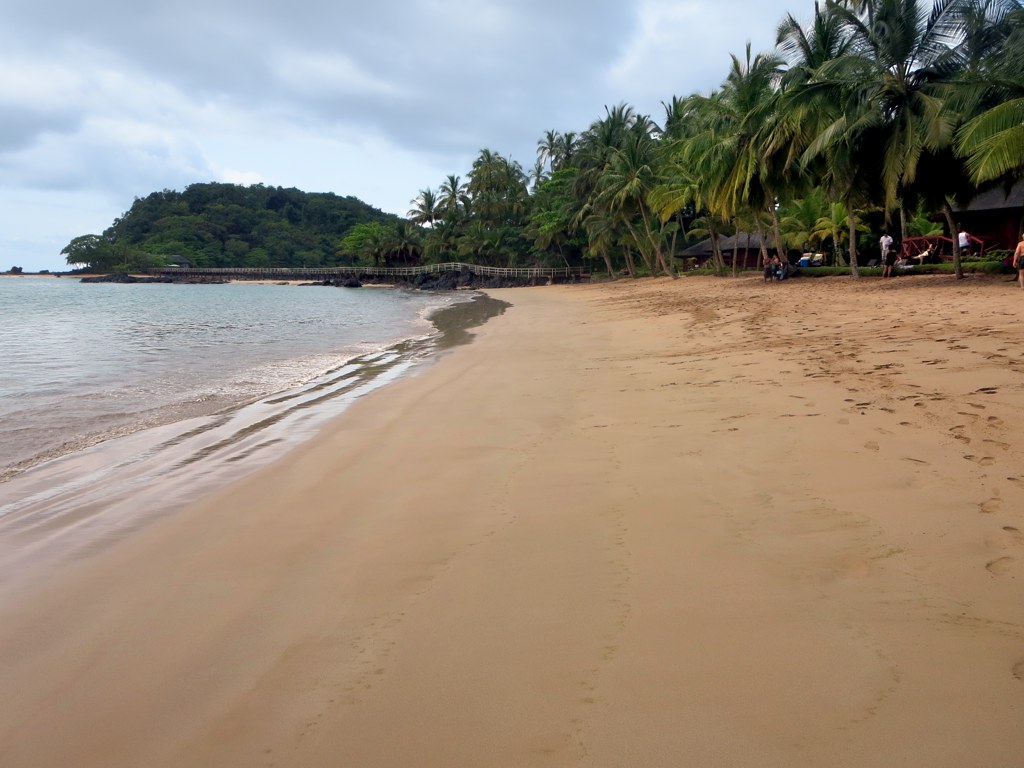
Praia de Coco; Credit : https://www.flickr.com/photos/davidstanleytravel
São Tomé and Príncipe is the second-smallest country in Africa and has the second-fewest people. Sao Tome and Principe have a total population of 196,548, with most living on the two largest islands. A whopping 96% of the population is concentrated on Sao Tome, the largest island. Based on land area, the country ranks number 172 among all nations. Sao Tome is 854 square kilometers in size, while Principe is only 136 square kilometers.
There are no dangerous animals in the jungles.
There are no predatory animals in São Tomé and Príncipe’s jungles. None of the big cats, creepy crawlies, or scaly critters are here. This is nothing like the dangerous wilds of mainland Africa. Malaria-carrying mosquitoes pose a significant health risk to humans. This means that all tourists should take precautions against getting bitten by mosquitoes.
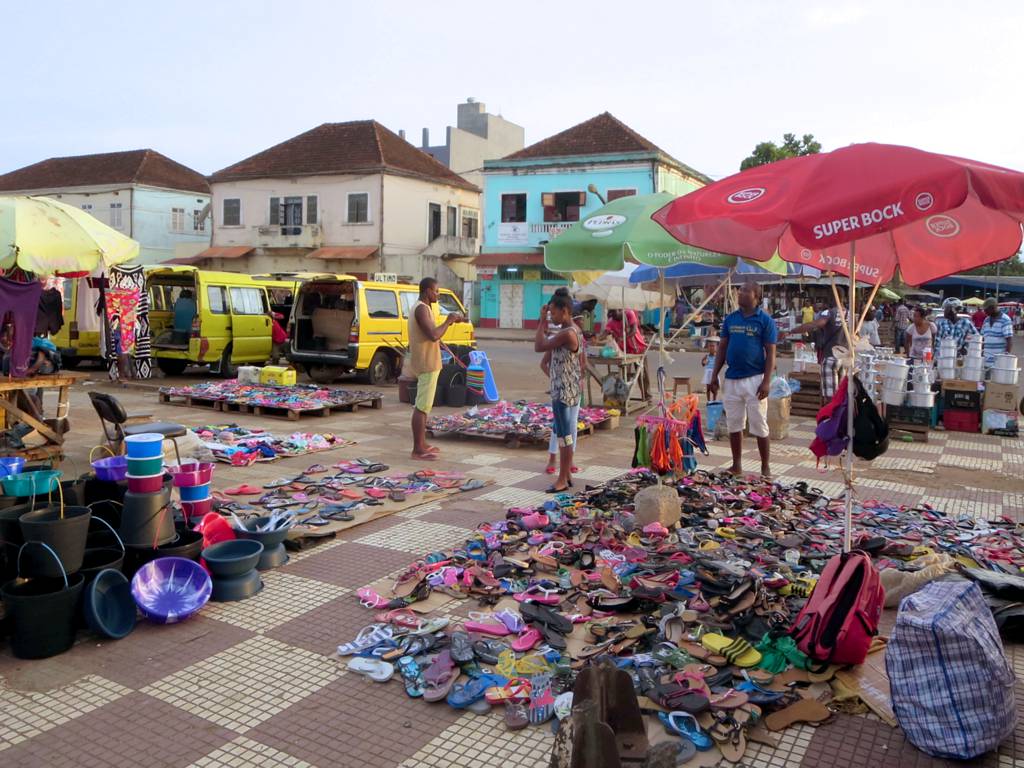
Praca Yon Gato; Credit : https://www.flickr.com/photos/davidstanleytravel
Discover São Tomé and Príncipe‘s Hidden Gems: The Top Must-Do Experiences
Conclusion:
The country is breathtaking, and the people are super friendly and inviting. São Tomé and Príncipe are home to a land and culture that cannot be replicated anywhere else in the universe. As a result of fusing the customs of both Africa and Portugal, a new and distinct culture has emerged.
The volcanic activity and African ancestry combined to create a beautiful Atlantic Ocean section, and this area are well worth exploring. We hope you enjoy your trip and read some interesting things about São Tomé and Príncipe!
Frequently Asked Questions (FAQ):
What is São Tomé and Príncipe best known for?
São Tomé and Príncipe is a founding member state of the Community of Portuguese Language Countries, also known as the Lusophone Commonwealth, an international organization and political association of Lusophone nations across four continents, where Portuguese is an official language.
Is São Tomé and Príncipe worth visiting?
Among the main Sao Tome and Principe tourist attractions are beach holidays, diving, hiking on mountain routes or to extinct volcanoes, snorkelling, fishing. Whatever, it is really worth getting Sao Tome and Principe visa and getting there. The townspeople are very respectful and considerate of visitors.
In which ocean is the island nation of São Tomé and Príncipe?
São Tomé and Príncipe is a small island country composed of an archipelago located in the Gulf of Guinea of the equatorial Atlantic Ocean.
What is the nationality of São Tomé and Príncipe?
Nationality: Sao Tomean(s). Ethnic groups: Mixed African, Portuguese-African. Religions: Christian 80%. Languages: Portuguese (official).
Is São Tomé the center of the world?
With an address at 1°N, 7°E, the striking islands of São Tomé and Príncipe are about as close to the centre of the world as it gets. Africa’s second smallest country, this remote archipelago was created by volcanic activity in the Gulf of Guinea some 31 million years ago.


